Established 2002
Written and designed by Roy Shepherd. Special
thanks to my wonderful wife
Lucinda Shepherd, friend Robert Randell and various experts for their support.
Using an Air-Abrasive Tool
Lucinda Shepherd, friend Robert Randell and various experts for their support.
Using an Air-Abrasive Tool
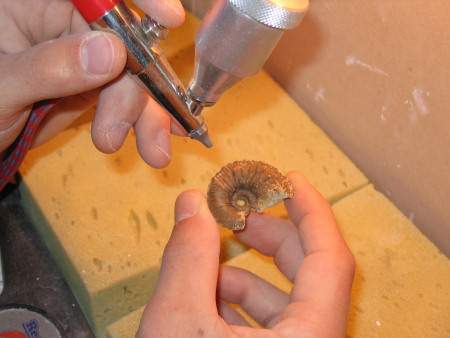
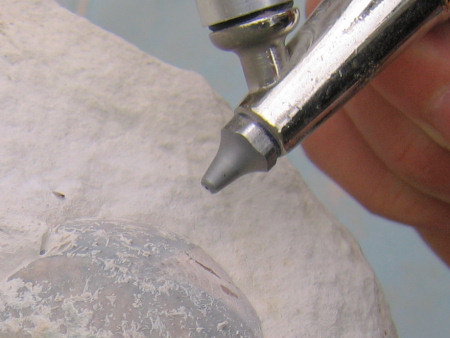
Left: A small ammonite from Grafham Water is prepared using an air-abrasive tool. Right: Abrasives are used in to clean an echinoid from Peacehaven.
What is an air-abrasive?
An air-abrasive tool uses compressed air to fire abrasive powder and is an ideal tool for the preparation of certain fossils. The air compressor links to a pen, similar to an air-brush, which allows the compressed air to be aimed with precision. Abrasive powder is delivered to the pen and sprays out with the compressed air.
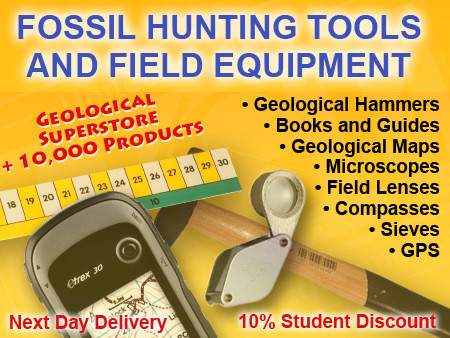
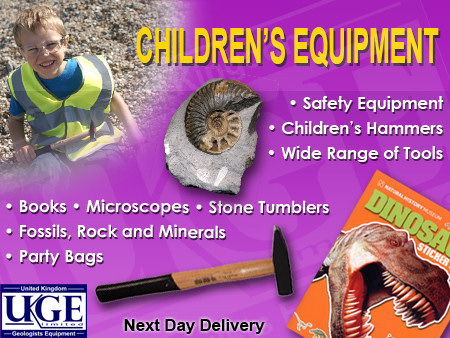
ADVERTISEMENT BY UKGE - OFFICIAL ADVERTISING PARTNER OF DISCOVERING FOSSILS
Benefits and capabilities
Air-abrasive units are found in every professional fossil workshop. They offer tremendous advantages over other preparation tools and are suitable for many types of fossils. Air-abrasives are most suited to soft limestone, such as chalk, where the rock matrix is soft whilst the fossil is relatively resistant. Chalk is soft because the microscopic grains are only weakly held together, so the abrasive powder easily dislodges them from the fossil and one another.
By choosing the correct abrasive powder and the right air pressure, the rock matrix can be completely removed whilst leaving the finest details of the fossil intact. Such details are often essential to palaeontologists for identifying fossils, but are easily destroyed by other tools (e.g. penknife).
Equipment
A complete air-abrasive unit is not a cheap set-up and a wide variety of equipment is available, so the enthusiast should research properly before making a purchase. The tool itself is comprised of an air compressor which is linked to an air-brush-like pen. The abrasive powder is contained either within a separate canister linked to the pen, or in small container mounted upon the pen itself. There are a variety of powders available, of various composition and coarseness which makes them variously 'aggressive'.
Safety
Many powders are potentially hazardous to health and abrasive work must be carried out within an enclosed unit, typically a box with a transparent lid, internal lighting and holes for hand access. An air extraction unit is vital to remove the powder laden air from within the work box. A mouth and nose mask, ear protection, gloves and goggles should be worn too. An air-abrasive set up is very noisy and dusty and should be installed in a suitably environment, such as an outdoor workshop.
Technique
Aggressive settings can be used to clear large volumes of matrix, but the air-abrasive is best suited for the fine detail preparation once the bulk of matrix has been removed. Ideally the matrix should be trimmed such that only a very thin cover of matrix remains but the fossil itself remains unexposed and unmarked. With soft limestone such as chalk this can be achieved with dental tools and toothbrushes.
Generally the air-abrasive pen should be held at a low angle to the surface being worked upon, unless there are delicate surface features such as spines which are best not undermined. Whilst in action, the pen should be in constant motion as even the least aggressive powder will etch or polish the surface of a specimen if aimed at a single point for more than a second or two.
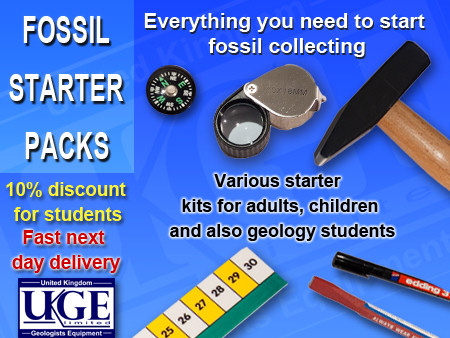
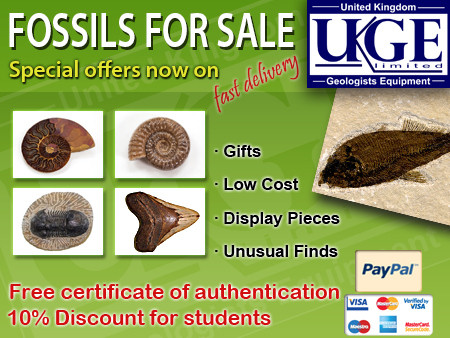
ADVERTISEMENT BY UKGE - OFFICIAL ADVERTISING PARTNER OF DISCOVERING
FOSSILS
Pictures and videos
The following examples show what can be achieved in very short time with a reasonable air abrasive set up.
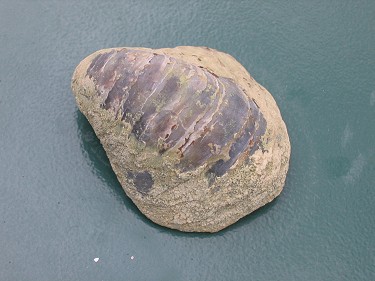
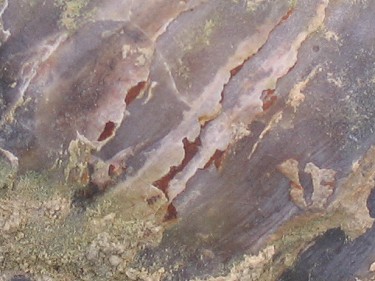
Removing the weathering crust from a
Jurassic oyster. Video clip:
click here
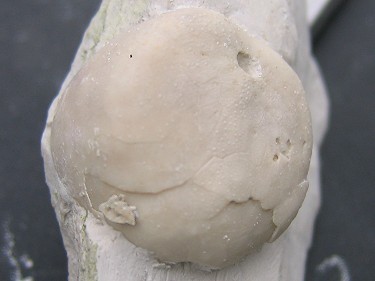
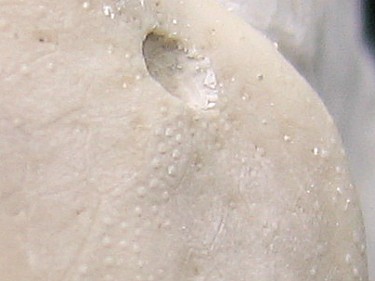
Preparing a chalk echinoid with
delicate surface detail. Video clip:
click here
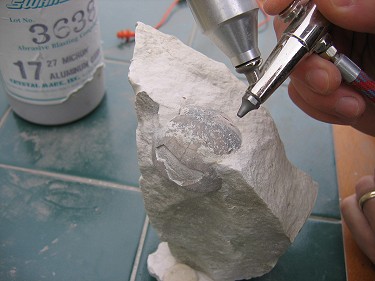
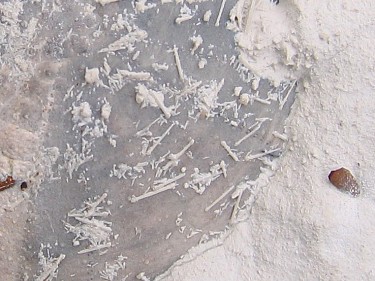
A rare example of a chalk echinoid
which has retained its covering of tiny spines. Video clip:
click here
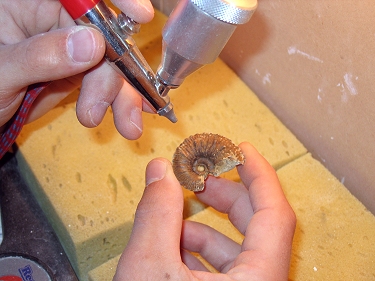
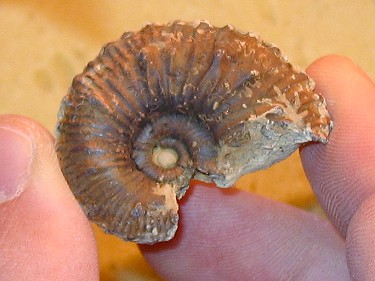
Removing the weathered crust from a
Jurassic ammonite. Video clip:
click here
For more information about recognising and conserving the features that contribute to a specimen's scientific value, please refer to the following online guide: Conserving Prehistoric Evidence.
Join us on a fossil hunt
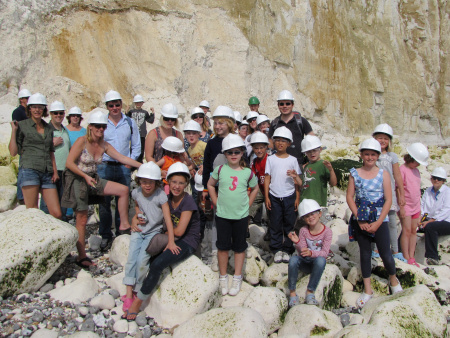

Left: A birthday party with
a twist - fossil hunting at
Peacehaven.
Right: A family hold their prized ammonite at Beachy Head.
Discovering Fossils guided fossil hunts reveal evidence of life that existed millions of years ago. Whether it's your first time fossil hunting or you're looking to expand your subject knowledge, our fossil hunts provide an enjoyable and educational experience for all. To find out more CLICK HERE




